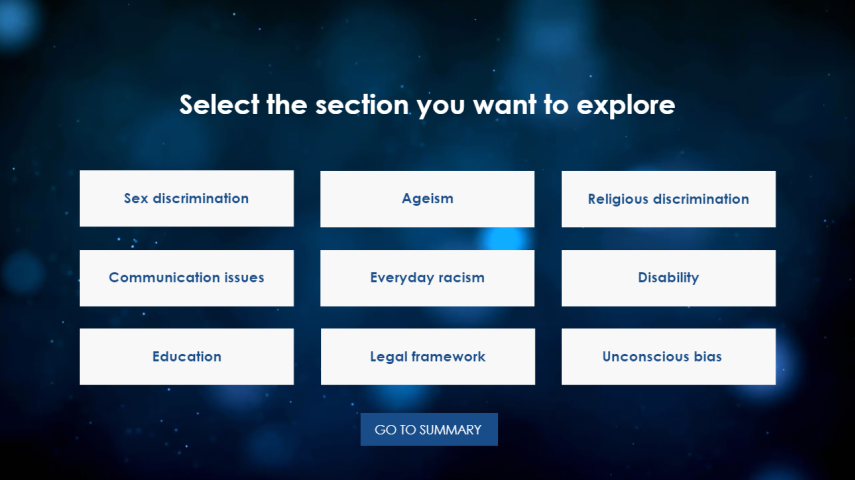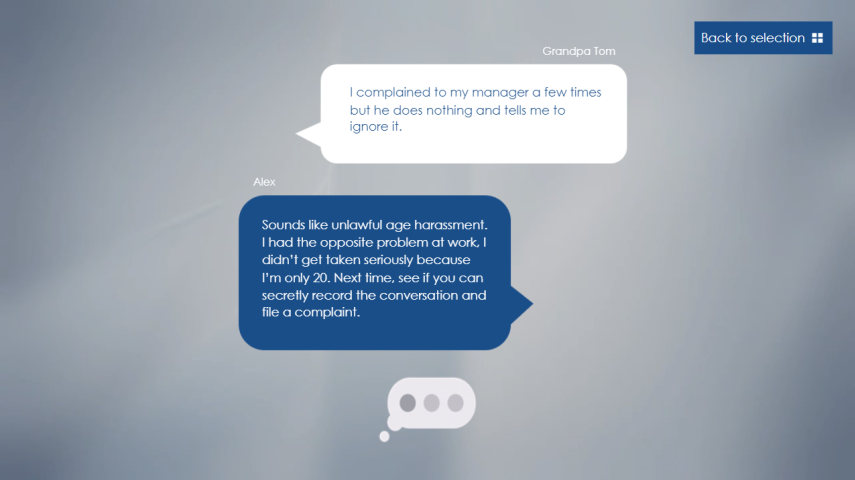To improve and analyse this website. You can find more information on this in our privacy policy or under settings. There you can also object to the use of cookies.

eLearning courses on Fairness First
Diversity in Companies
The online training Diversity in the Company strengthens employees' understanding of the benefits of diversity, variety and inclusion in the working world. It supports them in promoting an inclusive corporate culture that values the individual differences of all employees and strengthens their cooperation.
- Seat Time: 25 Min.
- 2 languages
- For all employees
Learning Objectives
- 1. Recognizing subtle discrimination
- 2. Understand the benefits of open and honest communication
- 3. Learn the most important things about diversity management and the General Equal Treatment Act
- 4. Create a culture of lived diversity
- 5. Counteract unconscious prejudice
eLearning Features
-
Quiz questions
-
Interactive elements
-
Barrier-free (on request)
-
including certificate of participation
-
Extra assets (e.g. handout, promo video, poster)
-
Mobile-optimized (optional)
-
Variety of formats (e.g. video, gamification)
-
Available in the LMS or via our learning platform

Course Chapters
Your content is missing? We have more courses!
Would you like to add your own touch to the course content?
We individualise our courses to your content and design requirements.
Request nowStart training easily!
Easy integration of our courses into your LMS.
SCORM 1.2 | xAPI | HTML5
No LMS? No problem!
Our Online Academy offers a user-friendly training solution to train your own and other people's learning content digitally and easily.
Fairness First
Training available in over 30 languages.



















































